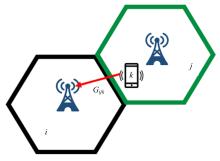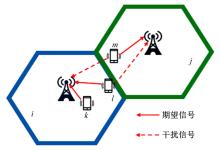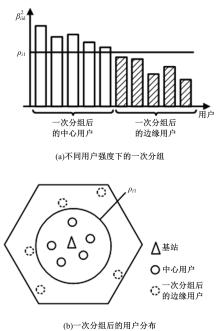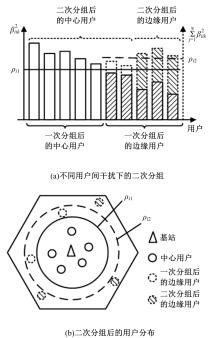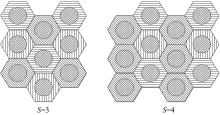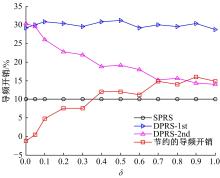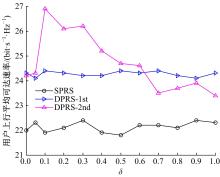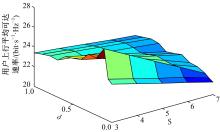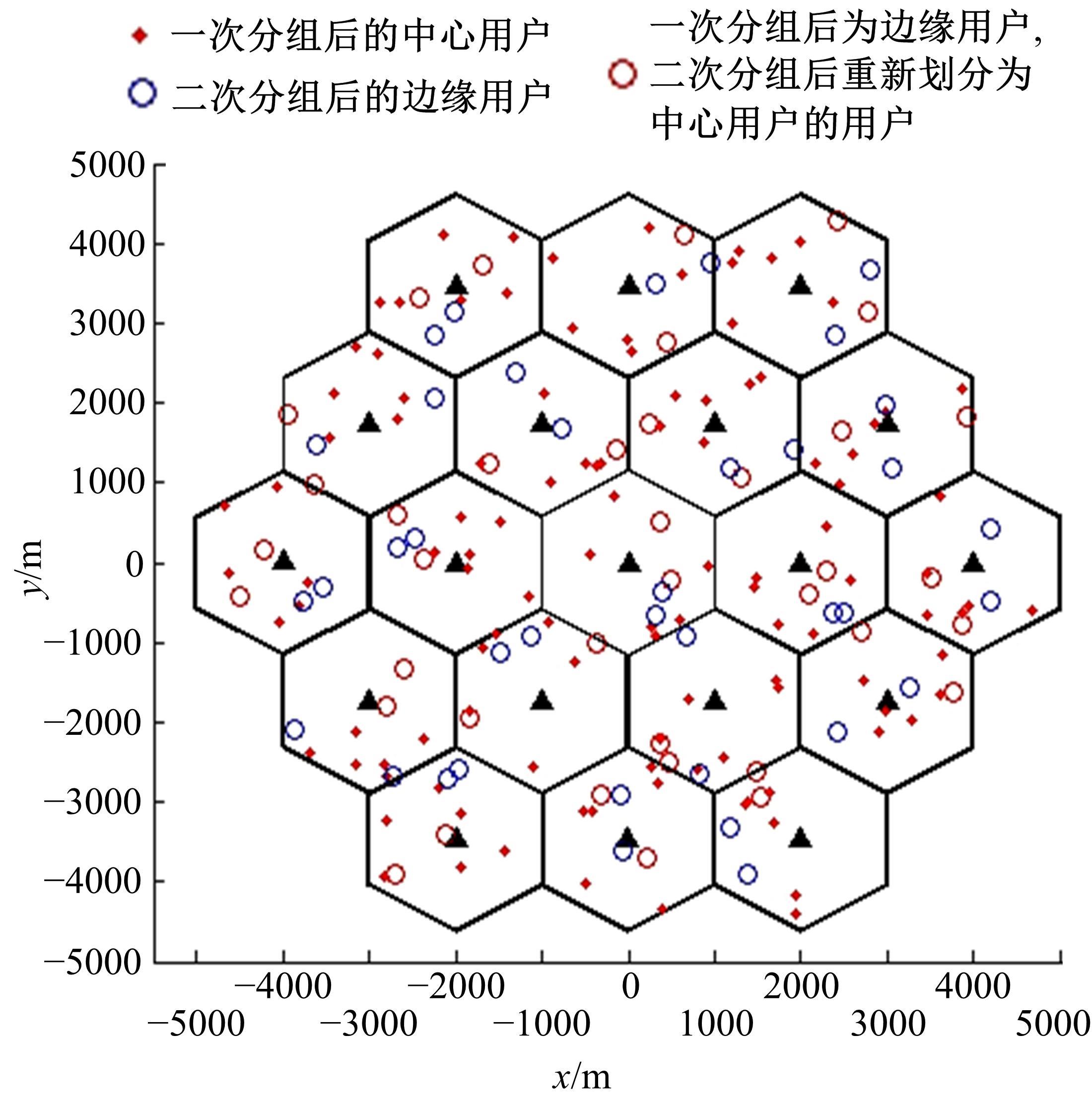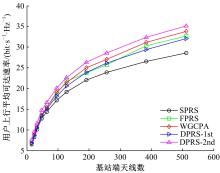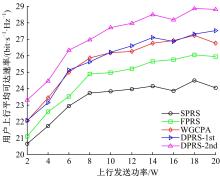吉林大学学报(工学版) ›› 2021, Vol. 51 ›› Issue (6): 2225-2236.doi: 10.13229/j.cnki.jdxbgxb20200666
• 通信与控制工程 • 上一篇
基于分组导频复用的大规模多输入多输出系统导频污染抑制方法
- 1.东北电力大学 计算机学院,吉林省 吉林市 132012
2.国网吉林省电力有限公司 辽源供电公司,吉林 辽源 136200
3.国网江西省电力有限公司 信息通信分公司,南昌 330096
Pilot contamination suppression method for massive MIMO system based on divided pilot reuse
Jian-po LI1( ),Peng XUE1,2,Tao YANG3,Mei-lin LI1
),Peng XUE1,2,Tao YANG3,Mei-lin LI1
- 1.School of Computer Science,Northeast Electric Power University,Jilin 132012,China
2.Liaoyuan Power Supply Company,State Grid Jilin Electric Power Co. ,Ltd. ,Liaoyuan 136200,China
3.State Grid Jiangxi Information & Telecommunication Company,Nanchang 330096,China
摘要:
针对大规模多输入多输出系统由于导频序列数的限制以及用户间干扰造成的导频污染问题,提出了分组导频复用策略对导频序列进行重新分配。根据小区内用户受干扰的严重程度,通过两次分组将用户分为中心用户组和边缘用户组,为边缘用户分配完全正交的导频序列;并重点针对边缘用户提出了导频开销优化策略,寻找兼顾考虑导频污染抑制和导频开销问题的最优导频分配方案。仿真结果表明,本文方法可以有效抑制导频污染,提升系统性能。
中图分类号:
- TN929.5
| 1 | Xia X C, Xu K, Wang Y, et al. A 5G-enabling technology: benefits, feasibility, and limitations of in-band full-duplex mMIMO[J]. IEEE Vehicular Technology Magazine, 2018, 13(3): 81-90. |
| 2 | Xu F, Wang H Q, Wang H G, et al. A new constellation coordination and pilot reuse for multi-cell large-scale MIMO systems[J]. IET Communications, 2020, 14(2): 357-363. |
| 3 | Liu L, Yu W. Massive connectivity with massive MIMO-Part I: Device activity detection and channel estimation[J]. IEEE Transactions on Signal Processing, 2018, 66(11): 2933-2946. |
| 4 | Zhang J Y, Chen S F, Lin Y, et al. Cell-free massive MIMO: a new next-generation paradigm[J]. IEEE Access, 2019, 7: 99878-99888. |
| 5 | 孙增友,杨东娜. 基于整体公平的D2D无线资源分配算法[J]. 东北电力大学学报, 2019, 39(1): 81-87. |
| Sun Zeng-you, Yang Dong-na. D2D radio resource allocation algorithm based on global fairness[J]. Journal of Northeast Electric Power University, 2019, 39(1): 81-87. | |
| 6 | Zdogan Z, Bjrnson E, Zhang J Y. Performance of Cell-Free massive MIMO with rician fading and phase shifts[J]. IEEE Transactions on Wireless Communications, 2019, 18(11): 5299-5315. |
| 7 | Zuo J, Zhang J, Yuen C, et al. Multi-cell multi-user massive MIMO transmission with downlink training and pilot contamination precoding[J]. IEEE Transactions on Vehicular Technology, 2016, 65(8): 6301-6314. |
| 8 | 王义君,张有旭,缪瑞新,等. 5G中基于系统中断概率的D2D资源分配算法[J]. 吉林大学学报:工学版,2021,51(1):331-339. |
| Wang Yi-jun, Zhang You-xu, Miao Rui-xin, et al. D2D resource allocation algorithm based on system outage probability in 5G[J]. Journal of Jilin University(Engineering and Technology Edition), 2021, 51(1): 331-339. | |
| 9 | Xia X C, Xu K, Zhang D M, et al. Beam-domain full-duplex massive MIMO: realizing co-time co-frequency uplink and downlink transmission in the cellular system[J]. IEEE Transactions on Vehicular Technology, 2017, 66(10): 8845-8862. |
| 10 | 邬春明,尚恒蕾. 基于QoS的D2D资源分配算法[J]. 东北电力大学学报,2020,40(2):89-95. |
| Wu Chun-ming, Shang Heng-lei. QoS-aware resource allocation for D2D communications[J]. Journal of Northeast Electric Power University, 2020, 40(2): 89-95. | |
| 11 | 路新华,王忠勇,张传宗,等.大规模MIMO系统上行链路时间-空间结构信道估计算法[J].电子与信息学报,2020,42(2):519-525. |
| Lu Xin-hua, Wang Zhong-yong, Zhang Chuan-zong, et al. Channel estimation algorithm using temporal-spatial structure for up-link of massive MIMO systems[J]. Journal of Electronics & Information Technology, 2020, 42(2): 519-525. | |
| 12 | Ali W A, Anis W R, Elshenawy H A. Spectral efficiency enhancement in massive MIMO system under pilot contamination[J]. International Journal of Communication Systems, 2020, 33(11): No. e4342. |
| 13 | Chen J, Chen H B, Zhang H, et al. Spectral-energy efficiency tradeoff in relay-aided massive MIMO cellular networks with pilot contamination[J]. IEEE Access, 2016, 4: 5234-5242. |
| 14 | 曹海燕,马子昌,杨晓慧,等. 大规模MIMO系统中基于用户位置和用户分类的导频分配[J]. 电信科学,2019,35(10):92-99. |
| Cao Hai-yan, Ma Zi-chang, Yang Xiao-hui, et al. Pilot allocation based on users' location and user classification in massive MIMO system[J]. Telecommunications Science, 2019, 35(10): 92-99. | |
| 15 | Parida P, Dhillon H S. Stochastic Geometry-based uplink analysis of massive MIMO systems with fractional pilot reuse[J]. IEEE Transactions on Wireless Communications, 2019, 18(3): 1651-1668. |
| 16 | Yuan W N, Yang X K, Xu R. A novel pilot decontamination scheme for uplink massive MIMO systems[J]. Procedia Computer Science, 2018, 131: 72-79. |
| 17 | 于银辉,周恒,杨莹,等. 大规模MIMO系统基于小区分类-交叉熵的导频调度算法[J]. 通信学报,2018,39(12):75-81. |
| Yu Yin-hui, Zhou Heng, Yang Ying, et al. Pilot scheduling algorithm based on cell classification-cross entropy for massive MIMO[J]. Journal on Communications, 2018, 39(12): 75-81. | |
| 18 | Fan J C, Li W Q. Analysis and optimization of fractional pilot reuse in massive MIMO systems[C]∥2017 IEEE 85th Vehicular Technology Conference, Sydney, NSW, Australia, 2017: No.17375841. |
| 19 | 李梦婉,景小荣,莫林琳. 多小区大规模MIMO系统中基于部分导频交替复用的导频污染减轻方法[J]. 信号处理,2017,33(8):1104-1114. |
| Li Meng-wan, Jing Xiao-rong, Mo Lin-lin. Pilot contamination reduction method with alternately fractional pilot reuse for multi-cell massive MIMO systems[J]. Journal of Signal Processing, 2017, 33(8): 1104-1114. | |
| 20 | Fan J, Li W, Zhang Y. Pilot contamination mitigation by fractional pilot reuse with threshold optimization in massive MIMO Systems[J]. Digital Signal Processing, 2018, 78: 197-204. |
| 21 | 王金鹏,叶政鹏,曹帆,等. 5G移动通信中基于同频干扰分布的协同分布式天线传输系统[J]. 吉林大学学报:工学版,2020,50(1):333-341. |
| Wang Jin-peng, Ye Zheng-peng, Cao Fan, et al. Cooperative distributed antenna transmission method based on co-channel interference in 5G mobile communication system[J]. Journal of Jilin University(Engineering and Technology Edition), 2020, 50(1): 333-341. | |
| 22 | 滕志军,滕利鑫,谢露莹,等. 基于多态蚁群优化算法的认知无线电动态频谱接入策略[J]. 江苏大学学报:自然科学版,2020,41(2):230-236. |
| Teng Zhi-jun, Teng Li-xin, Xie Lu-ying, et al. Dynamic spectrum access strategy based on improved polymorphic ant colony algorithm in cognitive radio[J]. Journal of Jiangsu University(Natural Science Edition), 2020, 41(2):230-236. | |
| 23 | 周硕,杨帆. 混合矩阵的二次特征值反问题及其最佳逼近[J]. 东北电力大学学报,2018,38(4):85-89. |
| Zhou Shuo, Yang Fan. Inverse quadratic eigenvalues problem for mixed matrix and its optimal approximation[J]. Journal of Northeast Electric Power University, 2018, 38(4): 85-89. | |
| 24 | 陆莉莉,季一木,孙延鹏,等. FLASH P2P协议及其应用分析[J]. 江苏大学学报:自然科学版,2016,37(5):585-590. |
| Lu Li-li, Ji Yi-mu, Sun Yan-peng, et al. Application and analysis of FLASH P2P protocol[J]. Journal of Jiangsu University(Natural Science Edition), 2016, 37(5): 585-590. |
| [1] | 孙大洋,王雪莹,韩双雪,钟辉,戴江南. 虚拟锚点高维坐标的非视距识别及定位优化[J]. 吉林大学学报(工学版), 2021, 51(6): 2207-2215. |
| [2] | 马彦,黄健飞,赵海艳. 基于车间通信的车辆编队控制方法设计[J]. 吉林大学学报(工学版), 2020, 50(2): 711-718. |
| [3] | 刘毅,肖玲玲,王改静,张武军. 基于联合优化的D2D资源分配算法[J]. 吉林大学学报(工学版), 2020, 50(1): 306-314. |
| [4] | 王金鹏,叶政鹏,曹帆,邹念育. 5G移动通信中基于同频干扰分布的协同分布式天线传输系统[J]. 吉林大学学报(工学版), 2020, 50(1): 333-341. |
| [5] | 李翠然,于永生,谢健骊. 基于次用户优先级的频谱共享动态博弈算法[J]. 吉林大学学报(工学版), 2020, 50(1): 315-323. |
| [6] | 李文军,华强,谭立东,孙悦. DV⁃HOP和接收信号强度指示结合的改进算法[J]. 吉林大学学报(工学版), 2019, 49(5): 1689-1695. |
| [7] | 王洪雁,房云飞,朱圣棋,裴炳南. 非均匀噪声条件下考虑互耦效应的DOA估计方法[J]. 吉林大学学报(工学版), 2019, 49(5): 1706-1714. |
| [8] | 刘勇,邓方顺,刘小林,闵思婕,王鹏. 基于双混沌振子的最小频移键控信号频率估计方法[J]. 吉林大学学报(工学版), 2019, 49(4): 1357-1362. |
| [9] | 王宏志,姜方达,周明月. 基于遗传粒子群优化算法的认知无线电系统功率分配[J]. 吉林大学学报(工学版), 2019, 49(4): 1363-1368. |
| [10] | 周彦果,张海林,陈瑞瑞,周韬. 协作网络中采用双层博弈的资源分配方案[J]. 吉林大学学报(工学版), 2018, 48(6): 1879-1886. |
| [11] | 孙晓颖, 扈泽正, 杨锦鹏. 基于分层贝叶斯网络的车辆发动机系统电磁脉冲敏感度评估[J]. 吉林大学学报(工学版), 2018, 48(4): 1254-1264. |
| [12] | 董颖, 崔梦瑶, 吴昊, 王雨后. 基于能量预测的分簇可充电无线传感器网络充电调度[J]. 吉林大学学报(工学版), 2018, 48(4): 1265-1273. |
| [13] | 丁宁, 常玉春, 赵健博, 王超, 杨小天. 基于USB 3.0的高速CMOS图像传感器数据采集系统[J]. 吉林大学学报(工学版), 2018, 48(4): 1298-1304. |
| [14] | 牟宗磊, 宋萍, 翟亚宇, 陈晓笑. 分布式测试系统同步触发脉冲传输时延的高精度测量方法[J]. 吉林大学学报(工学版), 2018, 48(4): 1274-1281. |
| [15] | 陈瑞瑞, 张海林. 三维毫米波通信系统的性能分析[J]. 吉林大学学报(工学版), 2018, 48(2): 605-609. |
|
||
